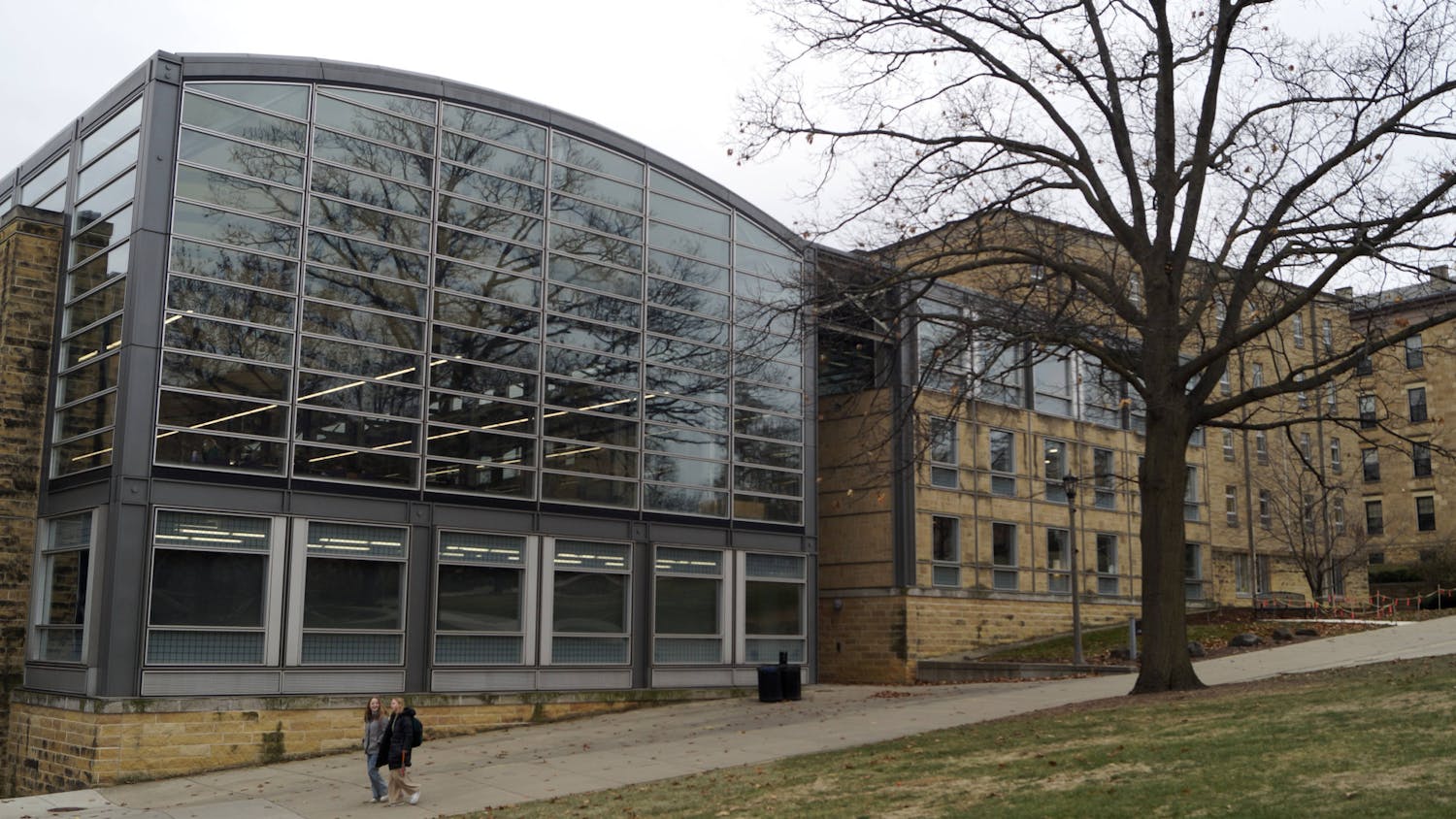City dwellers have known for decades that those living in crowded, urban areas need to deal with several distinct annoyances: heavy traffic on the streets, loud noises outside the window and cockroaches infesting the indoors.
Students who attend major metropolitan universities are no exception to the rule. The average urban student would not be too surprised if someone reported seeing a roach scuttling around on the floor in the basement of their downtown dormitories.
But the students living in the residence halls at UW-Madison do not just find one or two lone cockroaches lurking around in the basement.
We've had two in our room,\ said Dan Ziebell, UW-Madison freshman and Ogg Hall resident. ""One, actually, just this last week. [My roommate] Zach was in our room and saw it sitting on my loft. He smacked it off and was going to try to kill it, but it scurried into something. And then about three or four months ago, we saw one climbing up on our wall by the futon.""
Ziebell is not alone. Burke Pinney lives on the same floor as Ziebell and reports having encounters with cockroaches.
""I was [in the bathroom] washing my face one time and I had my sandals on,"" Pinney said. ""I felt something scurry over my feet. I washed my face off, looked down, and there was a cockroach there. I beat it with my sandal—thought I killed it. I went and brushed my teeth, came back, and it was gone. Parts of it were still there, but it was gone.""
Ogg Hall is slated to be torn down this summer and rebuilt at a later date, rather than renovated to make necessary changes and improvements.
In addition, there have been reports from residents living in the other downtown dormitories and some from the more secluded lakeshore dormitories of roaches and even rodents running around in their living quarters.
Jim Schomberg has been the building supervisor of Ogg Hall for the past seven years. Most of the time, if there is a report of a roach sighting in the building, he knows about it.
""We might have one, two of them a month,"" Schomberg said. ""Then we might not [have any]. We'd go a couple of months and then we'd get a couple more.""
Schomberg said he does not fret over reports of roaches in his building because he knows that the problem is taken care of in a responsible manner. A professional exterminating company, Terminix, is called in on a regular basis to routinely treat the building and kill roaches whether there have been reported sightings or not.
""We'll see a lot of dead [cockroaches] after Terminix goes through and does their monthly,"" Schomberg said.""Sometimes it's a couple times a month when they'll go through and spray—that's both food service areas as well as dormitories.""
Richard Allen Thayer, known by his colleagues as ""Rat"" because of his initials and his trade, is the assistant director of facilities for housekeeping. He plays a broader role in dealing with pests on campus.
One of the most critical roles Thayer plays in his job is dealing directly with exterminators when they come to campus to treat any of the dormitory facilities. His main concern is not necessarily how many roaches are found by residents. Thayer said he is more worried about making sure the buildings are treated properly when the exterminators come to kill them.
""From my perspective, roach sightings are the most disturbing thing that our residents go through,"" Thayer said. ""Mice are also sometimes a problem. I would say that my biggest concern is making sure that regardless of which one of those things it might be, that the pest control company lives up to their obligations.""
That's not to say that neither Schomberg nor Thayer have come across some situations in their experience that students have only been able to suspect or speculate about. Schomberg once watched a particularly unsettling extermination when Terminix was going through a standard spraying procedure of a trash shoot in Ogg Hall.
""It was right by the first floor trash room.We had a few of them come out crawling,"" Schomberg said. ""It was just like boom, right away, woke ‘em up.""
Thayer recalls one incident two or three years ago involving a run-in with some rodents.
""We had an incident where I think there was, like, 17 mice that were caught in one floor of a building,"" he said.""That was fairly significant. But everybody did their best in that situation.""
Despite perturbing instances such as these, Schomberg and Thayer insist that the measures that have been put in place for the dormitory buildings are sufficient and effectively take care of any problems that arise.
""I feel they're efficient,"" Schomberg said of the measures currently in place.
But this does not solve the fact that roaches are still getting into the residence halls and crawling around in the same areas where students eat, sleep and bathe. Many students point to all of the construction that goes on around the UW-Madison campus, blaming the noise and ruckus for driving roaches out from the steam pipes and sewers under the streets and into the residence halls.
""The more common roaches that run around the kitchen don't have anything to do with the sewers,"" Phil Pellitteri said. Pellitteri works in the Insect Diagnostic Lab at the UW-Madison Department of Entomology and is familiar with the circumstances that roaches are used to living under and their unique habits.
He firmly believes that the cockroaches found on the UW-Madison campus are more likely to be brought into dormitory buildings on used furniture or food products or migrate in from the neighboring residence halls, since roaches use common plumbing like a system of highways.
Pellitteri noted that once cockroaches settle into a multi-dwelling building such as an apartment complex or a residence hall, they are likely to slowly spread throughout the entire structure if they are not killed.
""There was a study done a number of years ago in Indiana where they were marking German cockroaches, which is the most common one,"" Pellitteri said. ""A third of the population would migrate from one unit to the next in a month's period of time if you did nothing.And then what even gets worse is that if you spray, many of the sprays have repellents to them. So you can spray and all you're doing is driving them to your next door neighbor.""
Pellitteri said another common misconception is that cleanliness will eradicate or, at the very least, prevent roach infestation in their home or dorm room.
""If I bring 10 cockroaches in a pizza box into your house and let them go, you can clean the place three times a day and you aren't going to get rid of them by cleanliness. There's a real misunderstanding there,"" Pellitteri said.
As futile as keeping roaches out of a building seems, Pellitteri said there are ways of keeping the creepy crawlers out of the building—completely.
""To be honest, there are ways of insect-proofing buildings, but we don't do it,"" Pellitteri said.""There's a product called diatomaceous earth.If you put a cockroach in a jar with diatomaceous earth, it will die.""
He said when construction workers put up a building, they can blow a dust-like residue of diatomaceous earth in the walls.
""In a wall-type environment, it won't go away,"" Pellitteri said.
The substance effectively acts as a permanent protective shield on a building that sends cockroaches scurrying away or kills them when they try to enter.
This brings to light a very serious question: If this method is so highly-effective, why doesn't the university—and every other institution facing cockroach infestation—implement this measure into all of its buildings?
""It's cost issues,"" Pellitteri said.""Nobody thinks of cockroaches when they build a building around here. I know the technology is there, but I don't know that I've ever heard of a building in Madison that went in that direction. It's usually the other way: it's already built, we've got cockroaches, what do we do?""
The fact of the matter is that despite their nasty appearance and bad reputation, cockroaches are not as much of a problem as most people make them out to be. And most importantly, they pose less of a health risk than the average person might think, Pellitteri said.
""Compared to a house fly, which is commonly associated with animal waste, decaying dead things and whatnot, house flies are a far more serious public health risk than cockroaches,"" Pellitteri said. ""The argument is that a house fly is far more of a public health significance because it's always hanging out in disgusting places. It's regurgitating on whatever it lands on.""
Either way, roaches are present on campus, and in great numbers. Even more pressing is the notion that there is more that can be done to deter them. But the degree of professionalism that is instituted in dealing with pests, the frequency with which they are dealt with and the relatively minor health risk they pose really leaves the question of whether roaches in the dormitory buildings are a problem open to opinion.
Pinney pointed to a spot in the middle of the long desk along the window of his dorm room. ""There was a little one crawling over here when you were sleeping,"" he said, gesturing to his roommate. His roommate nodded in agreement.
""I beat the crud out of it with a shoe and tipped over the Christmas tree in the process because it kept trying to run and hide. I ended up killing it.""
Pinney shook his head in disgust and added with a strong note of sarcasm, ""That's good stuff.""
\





